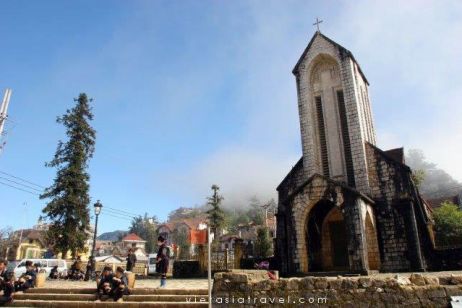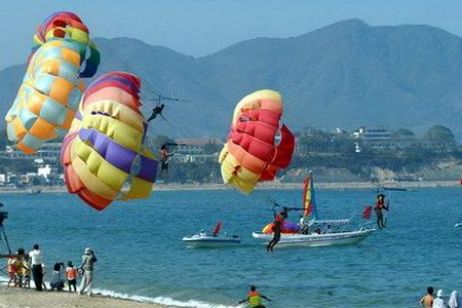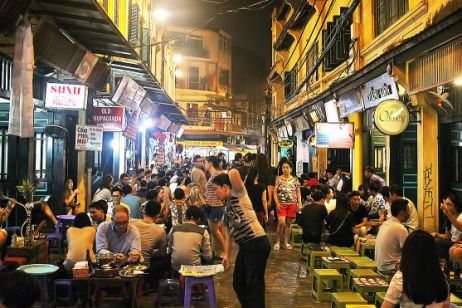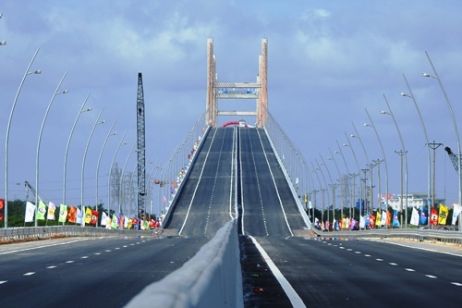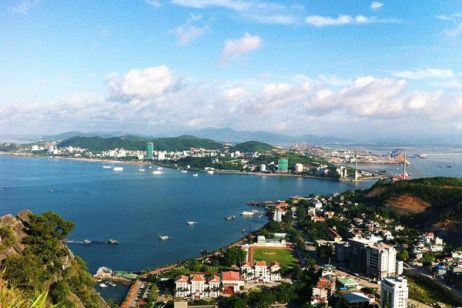Vietnam Travel & Tours from Canada
From Canada to Vietnam: Top Tips For Making The Most Of Vietnam Travel
Whether you’re going for the impossibly picturesque Halong Bay, where limestone towers rise from the sea, or the overwhelming bustle of Hanoi’s Old Quarter, travelling from Canada to Vietnam is a big endeavour that comes with even bigger rewards. For seasoned travelers and newbies alike, these specific tips for Vietnam travel can help alleviate some of the stress that comes with visiting a new country, and will help you focus on the exciting journey you’re about to embark on!
 1. Eat Up
1. Eat Up
It may seem like a no-brainer to be adventurous with local cuisine when travelling, but this is especially true in Vietnam. Even if you frequent Vietnamese restaurants in Canada, regional specialties and fresh, local ingredients make Vietnamese food even more impressive than in Canadian restaurants. From the creamy sweetness of iced coffee to the bursts of flavour that come from a deep friend spring roll, or a steaming bowl of pho, Vietnamese food is one of the country’s most agreed upon highlights. When you are in Vietnam, remember to try street foods which are the best. Pho, Bun Cha, Banh My are listed along the best 100 dishes of the world. All hotels in Vietnam offer daily breakfast and VietAsia Travel advises Canadian tourists to include lunches in their Vietnam tour packages, dinners are on own expenses to discover Vietnamese cuisine.

2. Make Time For Museums
When visiting any country, it’s important to acknowledge the history that has shaped the lands and cities you’ll be travelling through. Although Canada’s military never waged war on Vietnam, our proximity to the United States and status as a haven for draft dodgers during the war make it an important part of our cultural consciousness. Make time in your trip to visit a war memorial or museum, like the War Remnants Museum in Ho Chi Minh City, or the Hoa Lo prison in Hanoi (also known as the Hanoi Hilton). The display of graphic war images can make these museums unsuitable for those travelling to Vietnam with young children, in which case you should consider visiting the History Museum of Ho Chi Minh City, or the Nation Museum of Fine Arts in Hanoi.
3. Travel With VND and USD
While Vietnam has its own currency (Vietnamese Dong, or VND for short), it’s always a good idea to carry some American dollars in addition to the local cash (don’t bother carrying Canadian). The United States dollar is widely accepted throughout southeast Asia, and while you may never need to spend it, it’s possible to come across a vendor who prefers it, or one who will offer a preferred rate. Which brings us to the next tip…
4. Know Your Currencies And When To Bargain
Be aware of the current exchange rates when you travel to Vietnam, for both Canadian and US dollars when compared to the VND. If you’re given a choice between paying dong or US dollars, or need to visit a currency exchange, it’s up to you to know if you’re being treated fairly. If you don’t like the price, bargain! Tourists are almost always quoted higher prices than locals for items at markets and food stalls, but western custom (or Canadian politeness) stops most travelers from questioning the price they’re told to pay. Consider anything without a price tag to be fair game for bargaining, and you’ll come home with a few extra dong in your pocket.
5. Interact With Locals
Despite some travelers fervently warning against scams and tourist traps in Vietnam, you’ll get the best experience from this country when you interact with its people on a genuine basis. Even moving slightly off the beaten tourist path in terms of food and hospitality will put you in touch with people who aren’t in the business of taking advantage of tourists. Consider homestay options (or couch surfing if you’re particularly budget conscious) where local hospitality can open you up to experiencing Vietnam in a way that by-the-book travelling simply can’t. In your Vietnam tour package, it is nice to include a visit to a local family to understand Vietnamese culture and life or experience homestay where possible. Sapa, Mai Chau, Mekong delta are the places.

6. Determine Your
Visa Requirements Canadian travelers to Vietnam are required to have a Vietnam visa before entering the country. If you’ll be arriving by air, you can apply for a visa on arrival to be paid for at the airport, but anyone arriving by land from a neighbouring country must purchase a visa in advance, as they can not be obtained at the border. To avoid any additional hassles, be sure that your passport is valid at least one month past the expiration date of your visa.
7. Be Prepared For The Weather
While Canada can lay claim to some of the most drastic and severe weather in the world, it’s a mistake to assume that anywhere close to the equator is going to be warm and pleasant all year round. Vietnam’s different regions experience rainfall at different times throughout the year, but unlike a November rain in Vancouver, being wet in Vietnam doesn’t mean you’ll be cold. It’s more efficient to pack a rain poncho than a jacket that will have you quickly overheating. Even when dressed in light clothing, high humidity can leave you damp and sweaty. It’s always a good idea to have a dry set of clothes to change into after a long day of sightseeing, especially if your accommodations are air conditioned.

8. Travel With Antibiotics
It goes without saying that antibiotics shouldn’t be the immediate choice anytime you’re feeling ill while travelling, but if you’re prone to recurrent infections (like UTIs), travelling with a course of your usual antibiotics can save time and hassle. Unlike in Canada, many antibiotics are available to purchase without a prescription, but stick to larger and more reputable stores to avoid buying fakes.
Vietnam Tour packages
It is a great idea to research Google for some Vietnam travel information, but to book a Vietnam tour package, you had better contact a local tour operator in Vietnam like VietAsia Travel as they have real experience and offer much better price. Vietasiatravel.com will be your reliable address. It is a long way from Canada to Vietnam so Vietasia Travel advises Canadian travelers spend from 15- 18 days in Vietnam to see the whole country or extend few days to Cambodia to visit Angkor temples which will make your Vietnam holiday complete!
Here are some typical Vietnam Tour Itineraries for the Canadians
1/ 7 Day Vietnam Tours from Canada
2/ 10 Day Vietnam Tours from Canada
3/ 12 Day Vietnam Tours from Canada
4/ 14 Day Vietnam Tours from Canada
5/ 18 Day Vietnam Tours from Canada
6/ 20 Day Vietnam Tours from Canada
You can find here various other recommended Vietnam Tours from Canada and Southeast Asia Tours including Vietnam, Laos, Cambodia, Myanmar and Thailand.


